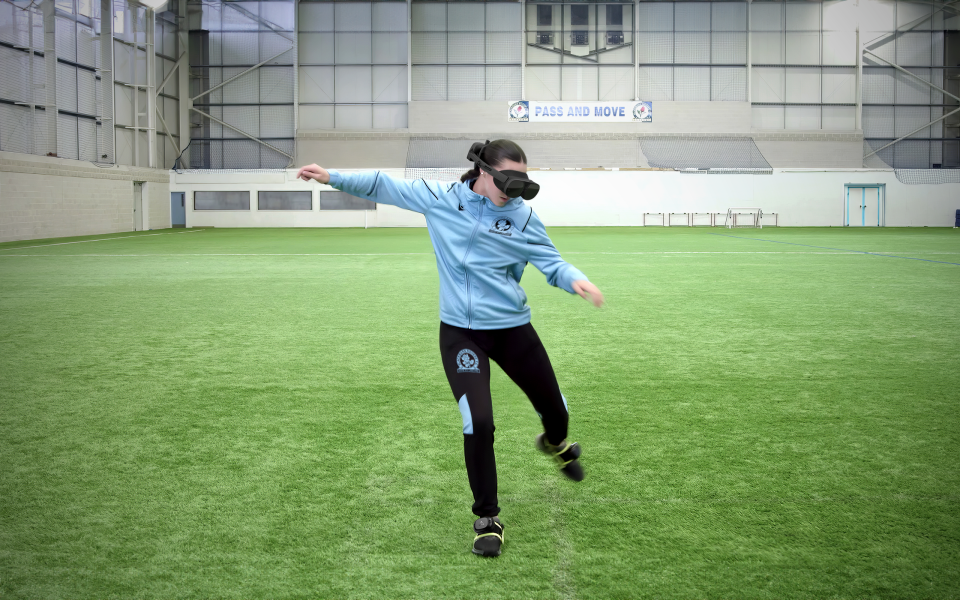HTC’s Vive Ultimate Trackers have cameras to improve full-body tracking
HTC’s Vive Ultimate Trackers have cameras to improve full-body tracking
Previous models were tracked by a base station.

HTC released the Vive Ultimate Tracker, which when paired with one of the company’s virtual reality headsets, delivers multi-point body tracking for users for everything from first-person shooter gaming to soccer skills training. The new tracker follows HTC’s Vive Tracker 3.0 line and will cost $199 per unit. HTC is also selling a three-pack that comes with the required wireless dongle and other accessories for a bundle price of $599.
You can use up to five “six degrees of freedom” (6DoF) Ultimate Trackers simultaneously and connect to a single headset to collectively support multi-point full-body tracking. Each tracker relies on two wide field-of-view cameras to precisely locate the wearer’s motions in 3D spaces, which ultimately gives it those self-tracking capabilities. The Global Head of Product at HTC, Shen Ye, said the technology built into the Ultimate tracker will enhance the virtual reality experience, making sessions “a lot more realistic and immersive.” Previous models relied on a base station for its tracking capabilities.
The lightweight positional trackers, weighing in at 94 grams a unit, can be attached to a variety of accessories, like a racket sports set, which expands its usability for things like VR training and dancing in VRChat. For example, the Vive Ultimate Tracker can be used specifically for foot tracking, which can be used to gauge passing skills during drills for soccer players. “From elite athletes to casual gamers, it’s extremely versatile and easy to set up anywhere,” Adam Dickinson, director of Rezzil, a tech company focused on training athletes using VR, says on using the new tracker.
It’s good enough for break dancing! https://t.co/MAkKe09H98
— Shen Ye (@shen) November 29, 2023
The new Ultimate trackers are flat and are smaller than a smartphone, giving it an entirely different look from its three-pointed predecessor, the Vive Tracker 3.0. The Ultimate Tracker can also be paired with a standard mount and paired with HTC’s Vive XR Elite and Vive Focus 3. The trackers communicate positional and map data to the headset via 2.4 GHz band and a 5 GHz WiFi band and have a battery life of up to 7 hours.
Though the company may be getting ahead of itself, Vive says it would eventually like the Ultimate Tracker to work independently with SteamVR without being paired to an XR headset. The first step in this process should come soon, as HTC plans to release a beta for direct connection to SteamVR “in the coming weeks.” This, the company says, will expand the Ultimate Tracker’s capabilities for industrial use. HTC headsets have been vying for space in the race to deliver the best virtual reality headset and accessories, primarily against the likes of Meta and its Quest headsets. Expanding the capabilities of its trackers may help Vive narrow the competitive gap, as more innovative applications may be key to enticing the niche world of VR gamers and users moving forward.
Update, November 30 2023, 1:08 PM ET: This story has been updated to clarify how the trackers use WiFi to operate.
(15)


